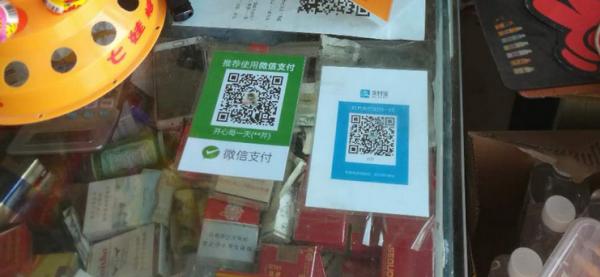The good and the bad in China's "Open Source on hyperspeed"
Is the new Shanzai, and China digitization in general, really “Open Source on hyperspeed”? Not really. But there IS lots to learn from it.

<u><em><strong>CAPTION:</strong>
<a href="https://logicmag.io/04-letter-from-shenzhen/" target="_blank">Unlike rural Europe, or USA, mobile digital payments are just normal in rural China</a>
</em></u>
A letter from Shenzen says:
- This is the new Shanzhai. It’s open-source on hyperspeed - where creators build on each other’s work, co-opt, repurpose, and remix in a decentralized way, creating original products that have modular, replaceable parts which need little equipment to open or repair. 2 Shanzhai’s past [looks like] knock-off iPhones and fake Louis Vuitton bags. New Shanzhai offers a glimpse into the future: its strength is in extreme open-source, which stands in stark contrast to the increasingly proprietary nature of American technology.
- In China, the real story is in the countryside… Aspiring small business owners in villages buy in bulk online to build small stores and supermarkets, rather than peddling their wares in informal markets
- [the core question is:] just how cultural is the construction of technology?… How can piracy help expand media and technological access in China?
- Why is creative reuse and the lack of intellectual property protections in Shenzhen seen as knock-off culture by many in the US, when the actual conditions are more like open-source?
The good and the bad

The same thousands of products, both in cities and in the countryside
</em></u>
Personally, I find lots of food for thought, together with practices to follow and others to avoid, in that letter from Shenzen.
To begin with, I have a strong feeling that what is described in points 1, 2 and 5 above would probably qualify (much) more as “collaborative economy” than as “Open Source” in the original USA/western definition. But I need to know more about how attribution, cooperation, “merging” of designs etc actually work in Shenzen to be sure. Please tell me what to read
At the same time, I am almost sure that “piracy” in point 4 is a wrong definition. “Piracy” is the wrong term that multinationals intentionally misuse when talking about illegal copying or redistribution of copyright-protected works. But even if those companies were right… Piracy is, again, illegal reuse of something protected by copyright, patents or trademarks. When what is copied never was wrapped in such packages, by definition there is no piracy.
The good: what happens in Shenzen, especially the “modular, replaceable” part, may not, strictly speaking, be Open Source. But in a world with the pollution and waste problems of today, is something that should be encouraged and copied elsewhere. Regulated, yes. But not forbidden. We need much more real innovation on that front.
The bad: is in point 2. Bringing broadband, affordable hardware and (above all!) real digital literacy to the countryside is good. Using it to “buy in bulk online” the same mountains of often superflous, hardly recyclable crap sold to urban dwellers, almost surely is bad, and bound to create big problems in the not so distant future.
Who writes this, why, and how to help
I am Marco Fioretti, tech writer and aspiring polymath doing human-digital research and popularization.
I do it because YOUR civil rights and the quality of YOUR life depend every year more on how software is used AROUND you.
To this end, I have already shared more than a million words on this blog, without any paywall or user tracking, and am sharing the next million through a newsletter, also without any paywall.
The more direct support I get, the more I can continue to inform for free parents, teachers, decision makers, and everybody else who should know more stuff like this. You can support me with paid subscriptions to my newsletter, donations via PayPal (mfioretti@nexaima.net) or LiberaPay, or in any of the other ways listed here.THANKS for your support!